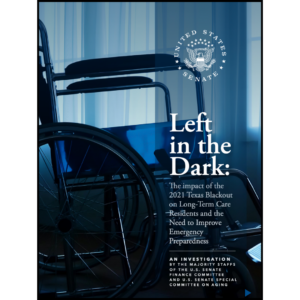Preventing workplace violence in LTC
As a life safety/disaster planning consultant to long-term care providers around the country as well as state nursing home associations, including the Arizona Health Care Association (www.azhca.org) and the California Association of Health Facilities (www.cahf.org), I have the opportunity of working directly with specific issues pertaining to safety and security at providers’ facilities.
It is not surprising that I have received a great number of inquiries since the tragic events of Sandy Hook Elementary School regarding security in LTC facilities. From a threat assessment perspective, LTC facilities are vulnerable to potential violence as illustrated by recent murder-suicides that have occurred in facilities in California and Arizona over the course of past few months. Additionally, the threat of workplace violence is ever present, especially considering the fact that a good percentage of violent incidents occur when a “domestic” situation at the employee’s home finds its way into the workplace.
Access control into any LTC facility should be a high operational priority. While it is important to maintain a friendly and inviting environment of care, access control cannot be disregarded. When conducting mock surveys, I often find unsupervised access doors (receiving areas, kitchens, secondary exits, etc.) that are left unlocked or are propped open for the purposes of convenience. In some cases, visitors are allowed to walk into facilities through a variety of entry points and are not required to sign-in (or at least check in with a receptionist or concierge). Maintaining a single point of public access or approved access control points that are properly supervised are essential to help ensure the safety and security of residents, staff and visitors.
While it is common to focus on emergency response protocols in reference to fire, evacuation, power failure and other commonly anticipated threats and perils, staff in LTC facilities do not receive a lot of information and training on general security and issues pertaining to workplace violence. Check out OSHA’s Guidelines for Preventing Workplace Violence for Health Care and Social Service Workers.
Site security, recognizing and defusing aggressive behavior and workplace violence prevention are topics that should be integrated into every facility’s training regimens. Consider adding these important items on the agenda of your next safety committee meeting or all-staff meeting to get multiple perspectives of security at your facility. I’m guessing that you will receive feedback from your team indicating that there is opportunity for improvement.

Stan Szpytek is the president of consulting firm Fire and Life Safety, Inc., in Mesa, Arizona, and is the Life Safety/Disaster Planning Consultant for the Arizona Health Care Association and California Association of Health Facilities. Szpytek is a former deputy fire chief and fire marshal with more than 35 years of experience in life safety compliance and emergency preparedness. For more information, visit www.emallianceusa.com or email Szpytek at Firemarshal10@aol.com.
Related Articles
Topics: Disaster Preparedness , Executive Leadership , Facility management , Risk Management











